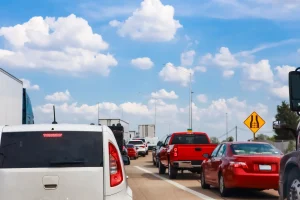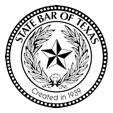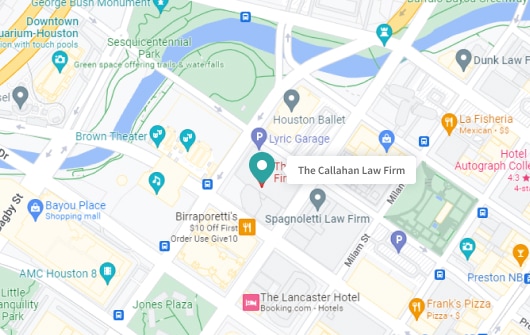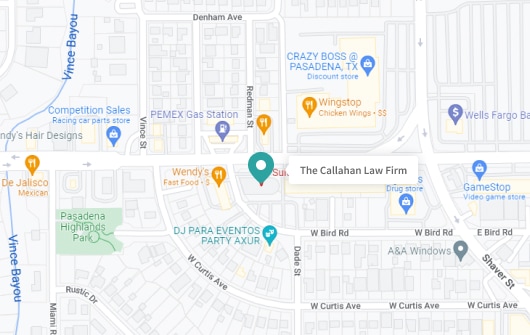Who Is At Fault In A Merging Accident In Texas

Navigating the on-ramp on a highway as you accelerate to merge with high-speed oncoming traffic can be rather daunting. If a collision occurs due to improper merging, determining fault is essential to figure out your next steps.
There are many factors to consider, including traffic conditions, signage, and the actions of each driver involved. If you find yourself in this situation, reach out to a Houston Car Accident Lawyer, and let us provide the guidance you need and help you navigate your legal options, offering clarity during this difficult time.
What Is a Merging Accident?
As responsible drivers in Texas, it is important to have a solid grasp of the regulations for merging onto highways and interstates. Failure to merge safely violates traffic laws and may lead to accidents that harm others.
In the unfortunate event of an accident caused by improper merging, the driver who failed to yield to oncoming traffic already on the highway may be deemed at fault. By neglecting to exercise a reasonable standard of care to prevent the collision, they bear liability for the damages and injuries incurred.
To avoid being at fault in a merging accident, drivers must adhere to all traffic laws and merge only when it is clearly safe to do so. Embracing safe driving practices, following posted signage, and maintaining vigilance is key in preventing such collisions.
What Are The Texas Merging or Right-of-Way Laws?
According to Texas Transportation Code 545, when a driver enters highway traffic from an on-ramp, they have an obligation to yield to oncoming traffic before merging. Additionally, this code establishes that when traveling on a road with three or more lanes in the same direction, a driver must yield to traffic on the left when entering from the right.
We recognize that the intricacies of the Texas right-of-way laws and regulations can be complex, but our experienced team of attorneys is here to guide you.
Determining Fault in a Merging Accident in Texas
The driver changing lanes or entering the highway is required to yield the right-of-way to oncoming traffic, carefully judge the proper amount of space and speed to merge safely and signal their intent to the driver in the lane they wish to merge into. This means that in most situations, the merging driver is at fault if an accident occurs.
There can be exceptions to this general rule. If the vehicle in the lane being merged into is violating traffic laws – distracted or reckless driving, for example – that driver may be held responsible for the accident.
When both cars attempt to merge simultaneously, they may share partial fault for the accident.
Liability in a Merging Accident in Texas
In the event of a merging accident in Texas, identifying the parties potentially responsible is crucial for determining liability. These may include:
- The driver who was merging: If the accident was caused by failing to yield the right-of-way or merging unsafely into traffic, the merging driver is likely to be responsible.
- The other driver: If the other driver’s negligence, such as speeding or distracted driving, contributed to the accident, they can be held partially or wholly liable.
- Employers: if the at-fault driver was working at the time of the accident, their employer could be held liable under certain circumstances.
- Vehicle manufacturers: if a vehicle defect contributed to the accident, the manufacturer of the vehicle could be responsible.
- Government entities: if poor road design, inadequate signage, or lack of maintenance played a role in the accident, a government entity could be at fault.
- Third parties: A third party, such as another driver on the road, who has caused either vehicle to take evasive actions leading to the accident, could be responsible even if they weren’t directly involved in the crash.
In some scenarios, liability might be divided multiple between parties. Determining liability in a merging accident in Texas involves a thorough investigation into all parties’ actions, which a car accident lawyer can help you with.
What are the Common Causes of a Merging Accident?
As you navigate a merging accident case, it’s essential to familiarize yourself with the common causes in order to identify fault. Here are the common causes of merging accidents:
Distracted Driving
Engaging in activities that divert attention from the road impairs a driver’s ability to maneuver into highway traffic safely. Distracted drivers are less likely to notice merging traffic signs, see vehicles in blind spots, and react swiftly enough to avoid an accident.
Excessive Speed
Driving at high speeds makes it challenging for a driver to accurately judge gaps in traffic and merge smoothly with the flow of traffic. This lack of control and reduced reaction time increases the likelihood of miscalculating the speed and distance of oncoming vehicles in adjacent lanes.
Neglecting to Signal
According to the law, drivers must use their turn signals when changing lanes or merging. Failing to signal deprives other drivers of crucial information, often resulting in sideswipes, rear-end collisions, or multi-car pileups.
What Type of Injuries Commonly Result from a Merging Accident?
Common injuries suffered in merging accidents include:
- Head and brain injuries
- Internal organ damage
- Whiplash
- Knee injuries
- Fracture and broken bones
- Soft-tissue injuries
What Should You Do After a Merging Accident?
If your vehicle is still operable, carefully move it to a safe location and turn on your hazards to alert other drivers and prevent further collisions. Then take the following steps:
1. Call 911
Regardless of the accident’s severity, contact law enforcement so they can document the incident with an official report. This report can be valuable if you need to file a claim. If the police don’t come to the scene, Texas law requires you to report accidents involving injury, fatality, or property damage of more than $1,000. Remain at the scene until the police arrive.
2. Seek Medical Attention
Prompt medical attention can both ensure your well-being and establish a medical record that will be helpful for any future legal claims. While medical records do not directly prove fault, they establish the harm suffered as a result of the lane change accident.
3. Exchange Contact Information
While waiting for the police, speak with the other driver but avoid admitting fault. Exchange essential information, such as names, contact details, insurance carrier, and policy number. If the other driver refuses to communicate, wait for the police to assist.
4. Document the Accident Scene
Take photos of all vehicles involved, capturing any visible damage. It is also beneficial to document the area surrounding the accident scene, including lines of sight, traffic signs or signals, and skid marks.
5. Contact a Houston Car Accident Attorney
Protect your rights by reaching out to a trusted car accident lawyer. Insurance companies often employ tactics to minimize or deny claims; a lawyer can challenge these. The legal team at The Callahan Law Firm can help navigate the complexities of your case and fight for the compensation you deserve.
Do You Need a Texas Car Accident Attorney?
Navigating the aftermath of a merging accident in Texas can quickly become complex, especially when multiple parties could be at fault. Here’s how our experienced accident lawyers can assist you:
1. Investigating the Accident
Your attorney will gather crucial information to establish liability, including:
- Reviewing the police report and speaking with witnesses
- Analyzing road conditions and signage at the accident location
- Obtaining footage from traffic cameras when available
- Examining damage to all vehicles involved
2. Establishing Liability
An experienced car accident attorney will help you establish liability, which typically hinges on various factors, such as:
- Right-of-way according to traffic laws, which typically requires the vehicle entering the roadway to yield to those already on it
- Determining if any driver was distracted or impaired – like using a cell phone or driving under the influence
- Assessing if road conditions, such as poor visibility or insufficient signage, contributed to the accident
3. Pursuing a Settlement
If another driver is primarily at fault, our attorneys will seek compensation for damages through insurance claims or civil lawsuits. We will skillfully negotiate with insurance companies to secure a fair settlement and, if necessary, advocate for you in court.
4. Defending Your Rights
Even if you are partially responsible, you still have the right to compensation for injuries and vehicle damage. Your attorney will tirelessly work to minimize your perceived fault and obtain the maximum compensation you’re entitled to.

Contact The Callahan Law Firm For Help With a Merging Accident!
Determining who is at fault in a merging accident in Texas requires a multifaceted approach that considers all angles and parties involved. To navigate the complexities of these accidents, you should seek help from an experienced personal injury attorney who is experienced in failure to merge cases, like those at The Callahan Law Firm.
We will conduct a comprehensive investigation to determine all responsible parties and fight for the compensation you may be entitled to.
Texas imposes strict rules and deadlines for personal injury claims, making it important to contact an accident lawyer as soon as possible after an accident occurs. Don’t risk missing out on compensation that can cover medical expenses, lost wages, and property damage. Contact an experienced Houston car accident lawyer from The Callahan Law Firm.
FAQ:
Who is at fault if two cars merge into each other?
In the event that two cars merge, fault is typically determined based on the specific circumstances of the accident. Assigning fault in such cases can be complex and may require an investigation to determine the actions and negligence of each driver involved.
When 2 lanes merge into 1, who has the right of way?
When two lanes merge into one, the driver in the through lane or the lane that is not ending usually has the right of way. However, it is important for all drivers to slow down, be cautious, and drive courteously when merging.

Michael S Callahan is an attorney and founder of The Callahan Law Firm. He focuses his practice on representing individuals and families in personal injury cases involving motor vehicle and truck accidents, workplace accidents and defective products. With over 25 years of experience, he is dedicated to fighting on behalf of people whose lives have been forever altered by the negligence and carelessness of corporations and individuals. Originally trained as a mechanical engineer, Michael has been practicing law and fighting for justice for those who need it most since 1994. He is board-certified in Personal Injury Trial Law by the Texas Board of Legal Specialization and a member of various esteemed legal associations. Outside of work, Michael enjoys spending quality time with his family, outdoor activities, and continually striving to improve as a trial lawyer and human being.











